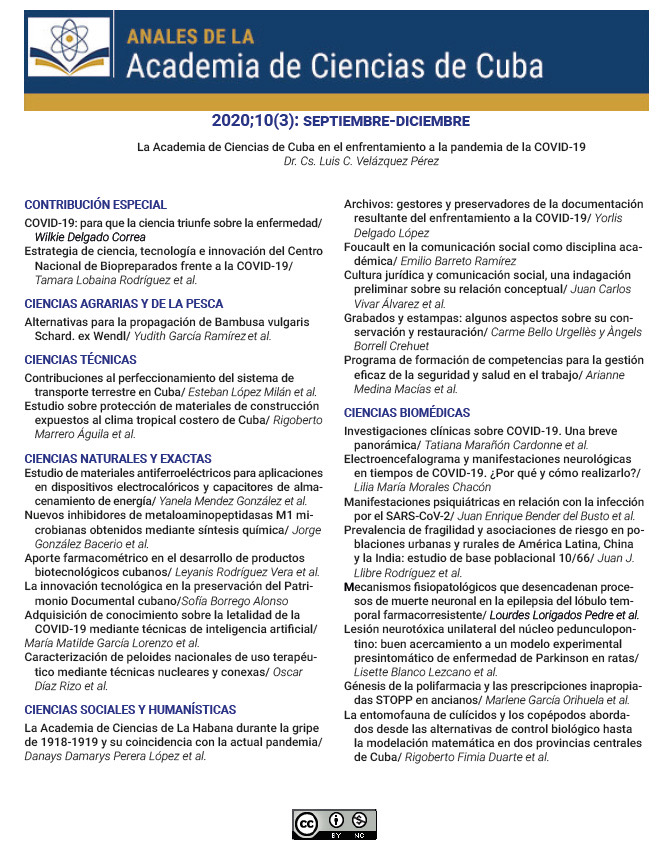Psychiatric manifestations in relation to SARS-CoV-2 infection
Keywords:
coronavirus, neuropsychiatric manifestations, SARS-CoV-2, COVID-19Abstract
Since Hippocrates, the role of the brain in mental illness has been accepted and Neuropsychiatry has been presented as the specialty integrating psychiatry, neurology, neuropsychology, and neuroscience in general. Considering the patients diagnosed with Acute Respiratory Syndrome in Wuhan, China, which has spread and is considered a pandemic, a summary of the scientific evidence available is made regarding the impact of coronavirus 2019 and its relationship with neuropsychiatric disorders. To prepare it, the search engine Google Academic and the descriptors COVID-19, SARS-CoV-2 and neuropsychiatric manifestations were used. Medline, SciELO, Scopus and Medscape databases were used. The general clinical manifestations of COVID-19 and the subacute or chronic psychiatric sequelae are described in relation to infection with SARS. COV-2, which include depression, anxiety and stress related to the pandemic. Emphasis is made on the care needed for health personnel, patients with previous mental illness and chronic neurological diseases, in whom symptoms can worsen and even lead into suicide.Downloads
Published
How to Cite
Issue
Section
License
The journal Anales de la Academia de Ciencias de Cuba protects copyright, and operates with a Creative Commons License 4.0 (Creative Commons Attribution-NonCommercial License 4.0). By publishing in it, authors allow themselves to copy, reproduce, distribute, publicly communicate their work and generate derivative works, as long as the original author is cited and acknowledged. They do not allow, however, the use of the original work for commercial or lucrative purposes.
The authors authorize the publication of their writings, retaining the authorship rights, and assigning and transferring to the magazine all the rights protected by the intellectual property laws that govern in Cuba, which imply editing to disseminate the work.
Authors may establish additional agreements for the non-exclusive distribution of the version of the work published in the journal (for example, placing it in an institutional repository or publishing it in a book), with recognition of having been first published in this journal.
To learn more, see https://creativecommons.org






